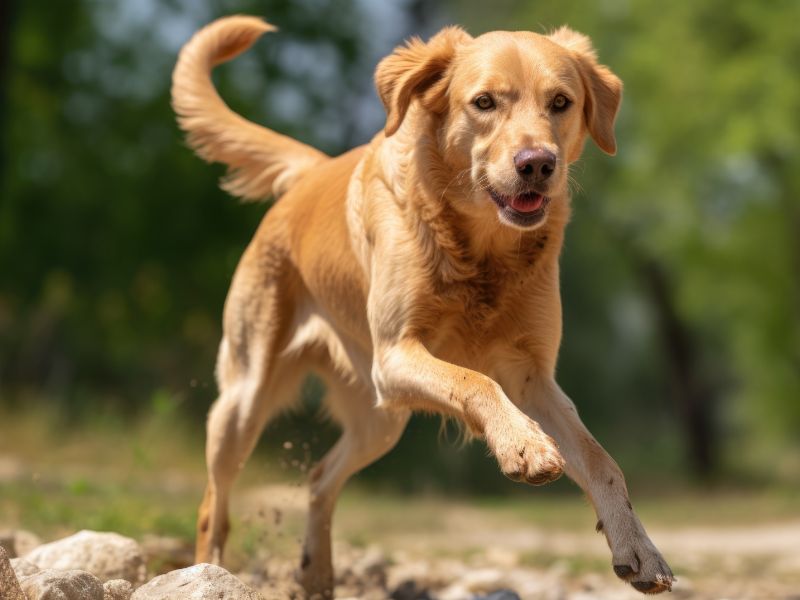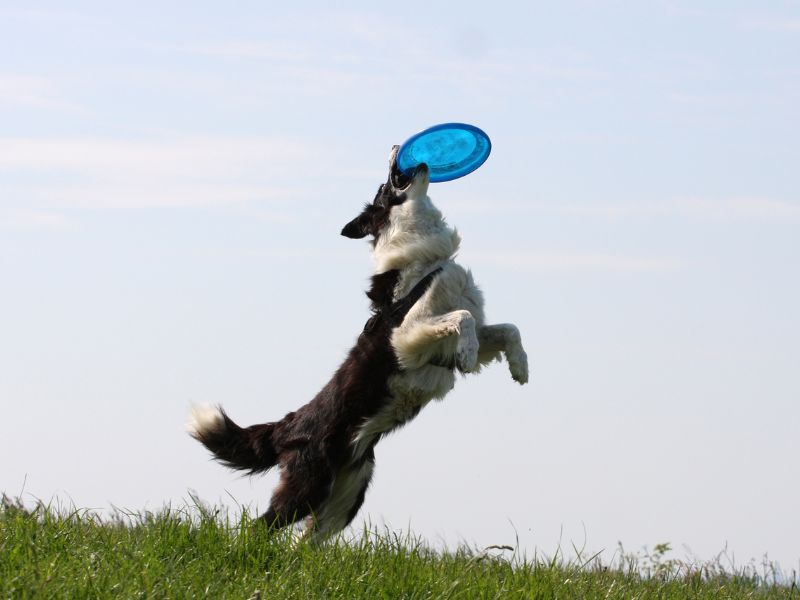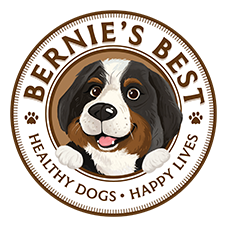Understanding Muscle Mass in Dogs
Muscle mass in dogs just refers to the amount of muscle tissue they have, which is vital for their physical strength, endurance, and mobility. Healthy muscle mass supports their entire skeletal system, helps all the metabolic functions your dog needs, and plays a significant role in their overall well-being and vitality. Maintaining a good muscle mass is crucial for preventing injuries and ensuring dogs can enjoy an active lifestyle with the ones they love.
Factors Influencing Muscle Development in Dogs
Several factors influence muscle development in dogs. Genetics, age, nutrition, level of physical activity, and overall health are the most common. For instance, some breeds naturally have more muscle mass, while others might be predisposed to muscular issues. Just like in humans, as dogs age, they naturally lose muscle mass, making it important to adjust their exercise and diet accordingly. Proper nutrition, regular exercise, and managing health conditions like arthritis are key to maintaining healthy muscle mass in dogs and ensuring they can enjoy their lives to the fullest.
Reasons to Build Your Dog’s Muscles
Building muscle mass in dogs is essential for various reasons. Strong muscles support joint health, improve balance and coordination, and enhance physical stamina. For active dogs, muscle mass is crucial for endurance and performance in activities like running or agility sports. More, good muscle health helps prevent injuries and aids in quicker recovery post-injury or surgery. As they age, this can be especially important.
What Is Muscle Atrophy?

Muscle atrophy in dogs refers to the loss or weakening of muscle tissue. This condition can result from a lack of physical activity, aging, or underlying health issues. Muscle atrophy reduces strength and mobility, affecting a dog’s quality of life. It’s no fun to play fetch when it hurts, and atrophy in dogs can do that.
Signs and Symptoms Your Dog’s Mobility is Worsening
You can usually see some signs that your dog’s mobility is worsening. These include a reluctance to move, difficulty standing up or lying down, limping, reduced activity levels, and noticeable discomfort during movement. These signs can suggest joint problems, muscle atrophy, or other mobility-related health concerns.
Symptoms of Atrophy of Muscles in Dogs
Symptoms of muscle atrophy in dogs include visible thinning or weakening of muscles, decreased strength, limping, and a reduced ability to perform physical activities. Atrophy is often more noticeable in certain areas, depending on the underlying cause. You might also notice a drop in their weight for no apparent reason, as muscle atrophy can reduce their muscle mass and weight.
How to Spot Muscle Atrophy in Dogs
Muscle atrophy can be spotted through visual observation of muscle loss, changes in how they walk, a reluctance to use certain limbs or babying them, and reduced physical activity levels. Regular veterinary check-ups can also help identify and address muscle atrophy early.
The Impact of Muscle Atrophy on Mobility in Dogs
Muscle atrophy significantly impacts a dog’s mobility. This condition can reduce strength and endurance, making even basic movements challenging. One study on agility-specific tasks described in a study from BMC Veterinary Research showed that the magnitude of muscular activation in key forelimb muscles was crucial for performing tasks effectively. In other words? Without muscles, your dog’s not doing much that they love to do, much less that they need to do. The research used electromyography (EMG) to measure muscle activation and found significant differences in muscle use during different tasks. When your dog suffers muscle atrophy, their muscular activations reduce, leading to a decline in their ability to perform such tasks. This loss of muscle function can affect not just agility tasks but also basic daily movements, ultimately impacting the dog’s quality of life.
Causes of Canine Mobility Loss

Mobility loss in dogs can stem from various causes, such as arthritis, hip dysplasia, obesity, neurological disorders, and injuries. Age-related wear and tear on joints and muscles contributes significantly to mobility loss.
How Muscle Mass Affects a Dog’s Movement and Agility
Muscle mass in dogs plays a crucial role in their movement and agility. Strong muscles are essential for providing the power and endurance needed for various activities, from simple walks to more complex agility tasks. Research finds that muscle mass is important for your dog’s stability and motion during walking. They need to enjoy everything in their day– from getting up to greet you in the morning to a rousing game of fetch. Muscle strength and coordination are key to a dog’s agility and overall mobility, and so taking care of it from the inside out is important.
Strategies for Maintaining Healthy Muscle Mass in Dogs
Maintaining healthy muscle mass in dogs, especially as they age, involves a combination of nutrition, exercise, and appropriate supplementation. Here are some strategies backed by research:
- Protein Intake: A study has shown that dietary protein intake affects lean body mass in dogs. When protein intake is inadequate, it can lead to muscle wasting and increased morbidity and mortality. Dogs need more protein than what is just required to maintain nitrogen balance; it’s crucial for preserving protein turnover and lean body mass.
- Omega-3 Fatty Acids: There is evidence from human studies that omega-3 fatty acids can improve muscle mass and strength by mediating cell signaling and reducing inflammation. These effects are likely to be similar in dogs due to the similar basic functions of omega-3 fatty acids across mammalian species.
- Antioxidants: Antioxidants such as astaxanthin found in certain dog foods can help protect against oxidative damage in muscle tissue. This is important for maintaining muscle integrity.
- Vitamin D: Vitamin D receptors are present in muscle tissue, and their activation is important for muscle function. Supplementation with vitamin D may benefit muscle strength.
- Exercise: Progressive resistance training, which includes activities that gradually increase in intensity, is beneficial for muscle strength and mass in dogs, just as it is in humans. According to the dog’s health conditions, tailored physical activities are crucial for maintaining muscle mass.
- Alkalizing Agents: Alkalizing agents may promote muscle strength by combating the acidogenic effects of certain diets.
- Regular Veterinary Check-ups: Regular check-ups with a veterinarian can help adjust a dog’s diet and exercise routine to their health needs, which is essential for maintaining muscle mass and overall health.
Special Considerations for Senior Dogs and Muscle Mass
Senior dogs may require adjustments in care to maintain muscle mass and mobility. Just like in humans, they may need a little extra love. Low-impact activities can help maintain muscle mass without over-stressing aging joints.
As dogs age, they can experience a loss of lean muscle mass, a condition known as sarcopenia. This loss can increase morbidity and mortality, making it important for caregivers and veterinarians to focus on diet and exercise interventions that can help reduce these age-related changes.
Research has shown that senior dogs benefit from diets that are rich in protein. We know protein is essential for preserving lean muscle mass, and it seems that senior dogs may have higher protein requirements than their younger counterparts. Diets with high protein content can help reduce the effects of sarcopenia. In fact, studies suggest that elderly dogs require at least 25% of their calories from protein to maintain muscle mass, which translates to diets containing at least 7 grams of protein per 100 kcal of metabolizable energy.
Another key aspect of nutrition for senior dogs is the inclusion of omega-3 fatty acids, particularly EPA and DHA in fish oil. These fatty acids are known for their anti-inflammatory properties, which can be beneficial in reducing inflammation from conditions such as obesity, a common issue in senior dogs that can exacerbate other health problems.
Exercise and an appropriate diet are other pivotal components of combating muscle mass loss in aging dogs. Regular physical activity can help maintain muscle mass and prevent the accumulation of excess body fat. While specific canine-focused research is limited, the parallels in sarcopenia across species suggest that targeted exercise and physical therapy could also benefit senior dogs.
It’s also important to manage the overall caloric intake of senior dogs, as their energy requirements tend to decrease with age. This makes them more susceptible to weight gain, which can lead to obesity and associated health issues. Weight management through controlled feeding and promoting activity can contribute to healthier aging for senior dogs.
We’re dog lovers. We always have been. Our love for our dogs is what inspired us to create Bernie’s Marvelous Mobility initially, and as our own dogs, Bernie and Lady, began to age, we knew we wanted to make sure their mobility was as good as it could be. There are too many games of chase and fetch we want to play with them, and so we put the best ingredients backed by science into delicious chews. They’re what we created for our own dogs, and we know will make a big impact in your dog’s life too. After all, good health and mobility start inside!





